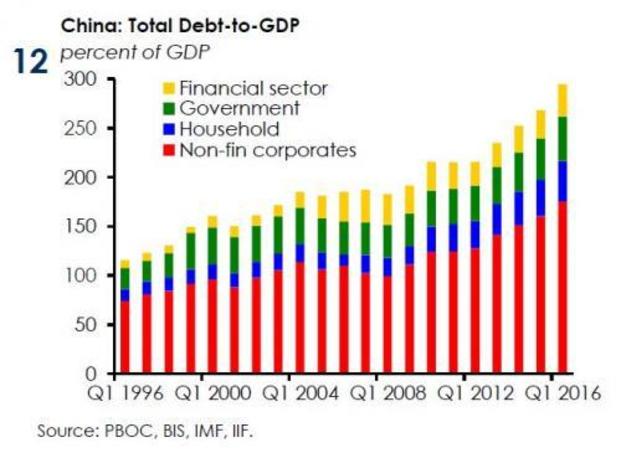Bears threaten Dow 18,000 on China fear
The Dow Jones Industrial Average (I: DJI) tested below 18,000 and returned to levels not seen since early July in mid-day trading on Thursday as as investors responded to weak economic data out of China and new worries about German lender Deutsche Bank (DB) on news of a hiring freeze.
Some residual pressure comes from the Federal Reserve as well, where the release of minutes from the September policy decision on Wednesday left expectations for a December rate hike intact despite policymaker concerns about tepid inflation and ongoing evidence of labor market slack. The futures market is pricing in odds of a December rate increase at near 64 percent amid recent hawkish commentary that risks to the economic outlook are roughly balanced and that a rate hike is thus justified.
What’s worse is that the drop in the Dow ends a two-month “pendant” formation and resolves a four-month consolidation range. With the index below its declining 50-day moving average, the technical outlook could hardly be more harrowing.
Turning back to China, the selling hit U.S. equity futures hard overnight on a batch of poor trade data that not only jeopardizes the already fragile Chinese economy but reflect tepid global demand as well. In U.S. dollar terms, Chinese exports dropped 10 percent from last year (versus expectations of a 3.3 percent drop) while imports fell 1.9 percent (versus expectations of a 0.6 percent gain). The numbers showed the largest drop in exports in seven months.
As noted by Deutsche Bank analysts, “while the trade data has a tendency to be quite volatile, the data will pose downside risks to the Q3 GDP print next week and will also likely put the focus back on the currency.”
Indeed, the Chinese yuan weakened in response to the data. As a reminder, poor data out of China, a weakening currency and higher inter-bank lending rates have been responsible for the two largest and most sustained market pullbacks of the last two years: In August 2015 and again in January of this year.
This, in turn, plays into two major structural concerns with China: A massive bad debt problem and accelerating capital outflows. The outflows are a consequence of people realizing that China will need to aggressively cut interest rates and its exchange rate to boost its economy. But, like a bank run or a stampede, the fear of a weaker currency begets selling which weakens the currency in a self-fulfilling cycle.
As for debt, according to Standard & Poor’s, Chinese banks will need $1.7 trillion to cover losses on bad loans as the country’s overall debt-to-GDP ratio hits some 300 percent. China reliance on credit has recently attracted the ire of the Bank for International Settlements and the International Monetary Fund.
On Monday, Beijing announced a series of guidelines aimed at reducing corporate debt levels including encouraging M&A activity, bankruptcies and debt-to-equity swaps. But these measures could very well make the problem worse.
Should global market turbulence continue, it might well give the Fed reason for pause and take that December rate hike off the table. Policymakers have frequently mentioned China over the past 18 months as an excuse for caution. And every time, stocks rebounded strongly.


